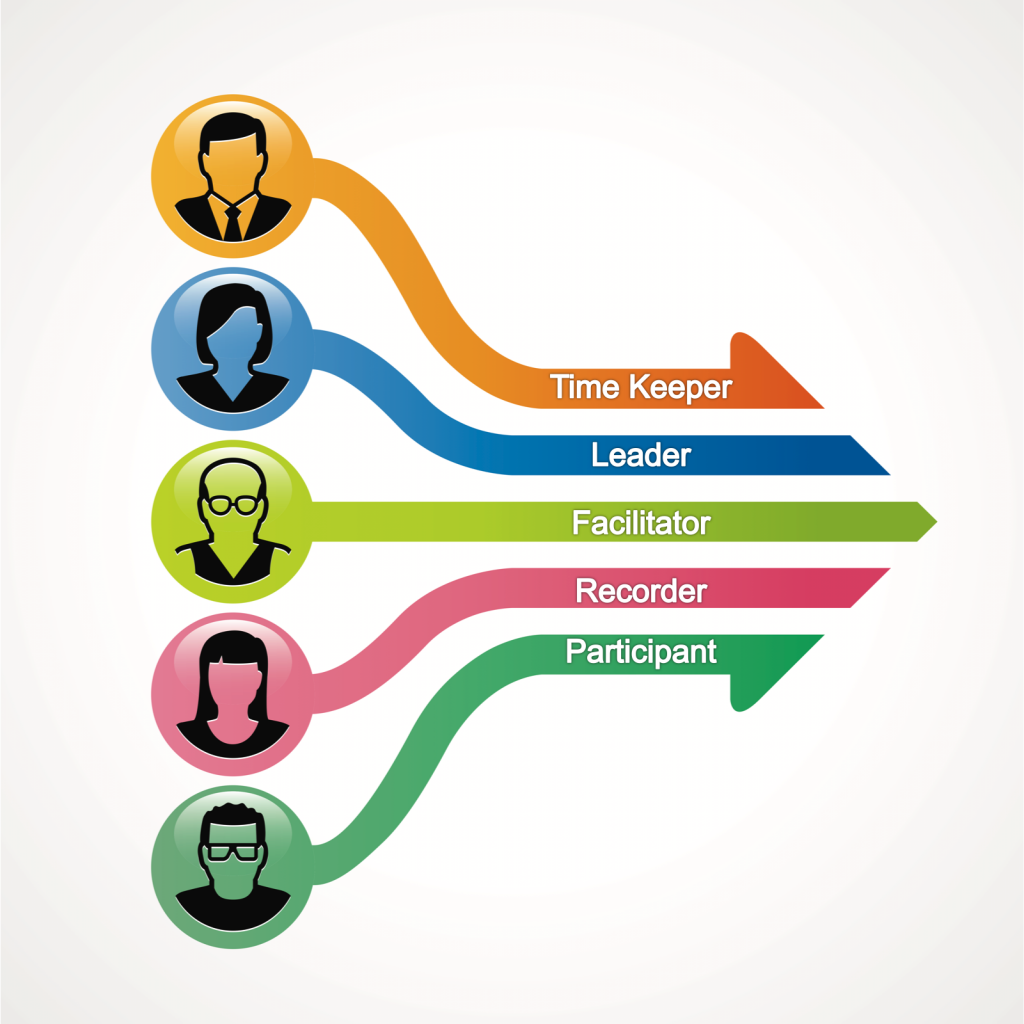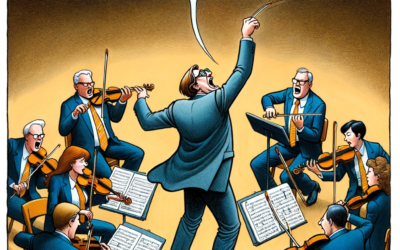 How to Prepare for a Meeting
How to Prepare for a Meeting
The first seven steps to prepare for a meeting are:
1. Set a clear and achievable goal for the meeting How to Prepare for a Meeting: Steps #1 & 2 that is in line with the organization’s vision and mission
2. Choose the appropriate type of meeting: decision-making, informational, motivational, or creative. How to Prepare for a Meeting: Steps #1 & 2
3. Select the right participants (without offending anyone). How to Prepare for a Meeting: Step #3
4. Schedule and structure the meeting to maximize the average attention span. How to Prepare for a Meeting: Step #4
5. Choose the meeting space that is right for your meeting type and needs. How to Prepare for a Meeting: Steps #5-7
6. Make sure your technology and equipment needs are met. How to Prepare for a Meeting: Steps #5-7
7. Provide sugary snacks and/or oxygen, so that participants stay alert. How to Prepare for a Meeting: Steps #5-7
Now let’s discuss how to fill meeting roles.
Step #8: Fill all the Meeting Roles
The nomenclature of Leader, Facilitator, Recorder, Timekeeper and Participants is common in meeting literature. What is uncommon is a full description of each role and why it is important.
Leader’s Role
The leader is the convener of the meeting. The meeting was initiated by him/her for a specific purpose. At the beginning of the meeting, the leader should strive to:
1) Express Appreciation–Let participants know that you appreciate their participation. If there is time, draw on specific contributions to make each participant feel good.
2) Unite the Team–Explain why everyone belongs at this meeting. People want to understand why they are important to the group. Don’t leave an individual or subgroup out–you will find that you will quickly lose their participation in the meeting if you do. If they feel snubed, they might actively work against you.
3) Share a Vision–Connect the purpose of this specific meeting with the larger organizational purpose.
4) Provide Direction–Explain who will be facilitating the meeting and why that choice has been made. If you want the group to decide on the facilitator, tell them in advance that this will be their responsibility so that they come prepared to make this decision.
Facilitator’s Role
Like an orchestra conductor, the facilitator tries to get participants to understand their roles and work for the good of the whole. That’s why it’s important for the facilitator not to be the leader. When leaders act as facilitators, they tend to dominate meetings. The meeting no longer feels like a symphony, it feels like a solo–with the leader selling or telling the team. In these meetings, participants don’t feel inclined to contribute or collaborate. They feel like they must listen and endure.
When a meeting goes well, everyone stays on the agenda, understands their roles, feels ownership in the process, listens to others, and makes key and timely contributions. The facilitator helps make this happen by:
1. Staying on Focus–When the group or an individual starts to wander away from the agenda, rein them back in.
2. Reducing Confusion–Provide a clear and concise agenda in a timely manner; arrive early to the meeting to answer questions, test equipment, check on refreshments, and provide direction; and make sure that participants understand and adhere to the rules and agenda.
3. Keeping the Leader or Others from Dominating–Seek to obtain as much valuable input as possible (including minority voices) before closing down a discussion. You may invite quiet participants to speak, respectfully ask the current speaker to wrap up, or call for a vote when the group is divided (perhaps by using some of the new and innovative tools provided by Turning Technologies and Group Mind Express).
Recorder’s Role
The recorder takes the meeting minutes and captures contributions on flip charts if needed. By having a separate meeting role for the recorder, the facilitator and participants can stay with the conversation and not be distracted by taking notes. The recorder holds more power, however, than people often realize. For more information about this role and ten tips for better minute-taking, click here.
Timekeeper’s Role
Because facilitators are often occupied with keeping the discussion moving forward, they may lose track of time. It’s helpful to have a timekeeper, so that too much time isn’t spent on one agenda item. When timekeeper notifies everyone that time is up, the facilitator and leader can decide whether to work through a particular barrier or put the item in the “parking lot.”
Time and meetings cost money. If the leader and facilitator have a sense of the cost per minute of all the participants’ time, they can use that figure to decide how much time to spend on each agenda item. The timekeeper can remind participants of the Time-Is-Money Meter when they’re spending too much time on a topic that has low monetary value.
The timekeeper should give a 5-minute warning prior to the end time on agenda items and a 10-minute warning before the meeting ends. This allows the facilitator to wrap up the current discussion and enough time to provide a cool-down question for the team.
Participant’s Role
Participants were chosen because of their knowledge, skills, and responsibilities. If the leader has chosen them well, they will be prepared for the type of meeting (decision making, informational, creative/brainstorming, motivational, implementation planning) and bring important skills or competencies to the table. In general, the greater the cognitive diversity of the group, the more effective the results will be.
Whether they’re visionaries, strategic thinkers, critical thinkers, systems thinkers, or practical/tactical thinkers, participants need to:
1. Read the minutes from the last meeting and any attached reports thoroughly before the meeting. They should prepare questions and concerns, and, time-permitting, send the more significant questions and concerns to the group in advance.
2. Come prepared to report on actions for which they are the DRI (Directly Responsible Individual).
3. Keep an open mind and listen thoughtfully to others.
4. Connect what they say to the overall purpose of the meeting and/or the vision and mission of the organization.
Related Posts
How to Prepare for a Meeting: Steps #1 & 2
How to Prepare for a Meeting: Step #3
How to Prepare for a Meeting: Step #4
How to Prepare for a Meeting: Steps #5-7
How to Prepare for a Meeting: Step #8
How to Prepare for a Meeting: Step #9



